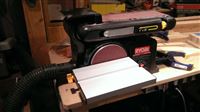The cost of a gallon of gas has been plummeting in the last few weeks. The following chart shows prices for the last 10 years.
I posted something about this on Facebook and Mom commented that gas prices always go down in election years. Well is that true?
Thanks to the wonderful interwebz, there are already a few studies that have done all the heavy lifting. It turns out that on average, prices fall around this time of year, but they fall more during election years. I recommend reading the full article from BusinessWeek, but here’s a key paragraph:
From 1991 to 2012, national gasoline prices fell by an average of 3.27 percent each year between the July 4th weekend (when demand tends to peak) and the first week of November. During presidential election years, prices fell by more than twice as much, 7.6 percent. Factoring in congressional election years (every even-numbered year), the average price decline is 5.35 percent. The smallest effect happens during odd-numbered years, when no candidates are running for the House of Representatives or Senate, though five states do hold gubernatorial elections. In those years, prices declined by only 0.6 percent.
Whatever the reason, I’m happily filling my tank for $2.89/gallon!

 After a spectacular summer, October has been WET. You might scoff and say that Seattle is always we this time of year. That’s sort of true. It’s usually wet but it’s rare that we get much total precipitation. Coupled with a very rainy February, we are already at our normal average rainfall for the full year.
After a spectacular summer, October has been WET. You might scoff and say that Seattle is always we this time of year. That’s sort of true. It’s usually wet but it’s rare that we get much total precipitation. Coupled with a very rainy February, we are already at our normal average rainfall for the full year.  There’s a new tool in my workshop and it has already been extremely useful. It’s a bench-sized combination belt and disc sander. There are a LOT of companies that sell the exact same product (with their own color scheme and logo), but I got a
There’s a new tool in my workshop and it has already been extremely useful. It’s a bench-sized combination belt and disc sander. There are a LOT of companies that sell the exact same product (with their own color scheme and logo), but I got a  Last year about this time, some of the guys came over and
Last year about this time, some of the guys came over and  If your computer is acting weird, slow or you suspect a virus, Windows 8 has two great new features that will help you get back to normal again.
If your computer is acting weird, slow or you suspect a virus, Windows 8 has two great new features that will help you get back to normal again. I see them everywhere: red vending machines that shoot out movies and put a bullet in the head of Blockbuster stores. It’s a great way to distribute discs, but I had never tried it. We always used Netflix. But since Elijah was born, we’ve canceled our Netflix subscriptions (both the disc and the streaming) because we don’t have much time to watch movies anymore. My team at work is going to see the new Hunger Games movie when it comes out and I wanted to see the second movie.
I see them everywhere: red vending machines that shoot out movies and put a bullet in the head of Blockbuster stores. It’s a great way to distribute discs, but I had never tried it. We always used Netflix. But since Elijah was born, we’ve canceled our Netflix subscriptions (both the disc and the streaming) because we don’t have much time to watch movies anymore. My team at work is going to see the new Hunger Games movie when it comes out and I wanted to see the second movie. This summer I bought an Xbox One and so far the only game I’ve been playing on it is Forza 5. It’s that good. Well, I’m a Forza fanatic. I’ve played them all and this one honors the franchise. Plus, I now know someone on the team so it’s fun to chat with him once in a while.
This summer I bought an Xbox One and so far the only game I’ve been playing on it is Forza 5. It’s that good. Well, I’m a Forza fanatic. I’ve played them all and this one honors the franchise. Plus, I now know someone on the team so it’s fun to chat with him once in a while.
Verizon and AT&T Are Selling Your Data
Here are a few places where you can read more:
This is pretty disgusting. Although they say you can opt out, it doesn’t do much good because they still add that tag to all your traffic. They just don’t have your permission to sell the data about you. But even a unique identifier across all of your traffic is pretty ugly.
The only way to really avoid this is to only browse to secure websites (https) because that traffic is encrypted. Or of course you can only use wifi instead of your cellular data, but the point of a smartphone is that you can connect everywhere. The best solution is to let your carrier hear what you think of this policy.
To test whether your carrier is doing this to you, open the following link on your cell phone. Make sure that wifi is turned off so that you’re using your cellular data plan: http://lessonslearned.org/sniff